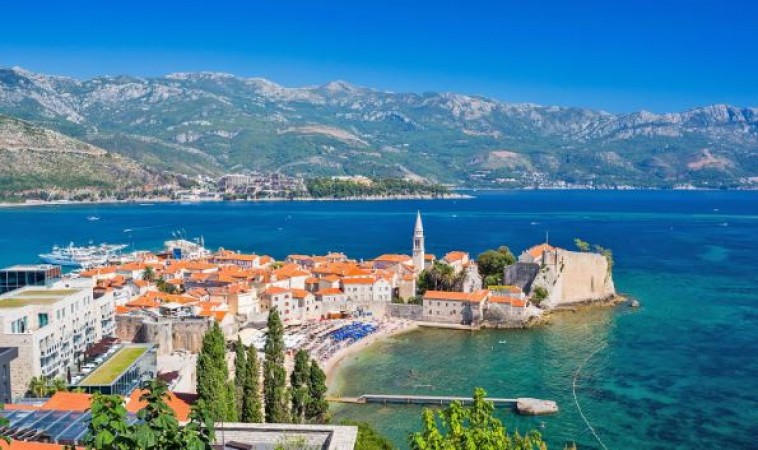
Montenegro,a tiny Balkan gem nestled along the Adriatic Sea, boasts a rich tapestry of history, breathtaking natural beauty, and a vibrant cultural heritage. Despite its small size, this enchanting country captivates visitors with its rugged mountains, idyllic beaches, and charming medieval towns. In this article, we will explore the allure of Montenegro, shedding light on its historical significance, stunning landscapes, and its journey towards becoming a popular tourist destination. Montenegro's history is as intriguing as its geography. From ancient Illyrian tribes to medieval kingdoms and Ottoman rule, the region has been a crossroads of civilizations for centuries. The most notable era was during the 14th to the 19th century when the country was a principality and later a kingdom.
It fiercely defended its independence, earning the epithet "Black Mountain" or "Montenegro." Visitors can delve into the past by exploring its numerous historical sites, including the medieval towns of Kotor and Budva, the Cetinje Royal Palace, and the iconic Ostrog Monastery, perched dramatically on a vertical cliff. Montenegro's diverse geography offers a striking blend of mountains, coastline, and pristine lakes. The country is dominated by the Dinaric Alps, which form a rugged and imposing backdrop.
The highest peak, Bobotov Kuk in the Durmitor mountain range, rises to an impressive 2,522 meters (8,274 feet) above sea level. The mountains are a haven for hikers, mountaineers, and nature enthusiasts, offering stunning vistas and abundant wildlife. The Adriatic Sea defines Montenegro's coastline, which stretches for approximately 293 kilometers (182 miles). Along the coast, visitors are treated to an array of beautiful beaches, picturesque coastal towns, and hidden coves. The Bay of Kotor, often referred to as Europe's southernmost fjord, is a UNESCO World Heritage Site and a magnet for tourists.
Natural Beauty: Montenegro's landscape is awe-inspiring, characterized by a diverse terrain that ranges from dramatic mountains to sparkling coastal regions. The imposing Dinaric Alps stretch across the country, providing ample opportunities for outdoor enthusiasts and hikers to explore majestic peaks and picturesque valleys. The Tara River Canyon, Europe's deepest, offers a thrilling experience for adrenaline seekers with its white-water rafting and breathtaking vistas.
On the other hand, the coastal region is a playground of sandy beaches, turquoise waters, and charming coastal towns. The Bay of Kotor, a UNESCO World Heritage Site, is particularly noteworthy for its fjord-like appearance, surrounded by steep mountains and dotted with historic settlements. The nearby Sveti Stefan island-hotel is an exclusive retreat, adding to the allure of Montenegro's coastline.
Cultural Heritage: Montenegro's cultural identity is a vibrant mix of its historical influences and the warm hospitality of its people. Traditional music, dance, and art are an integral part of the Montenegrin spirit. The country's Orthodox monasteries, adorned with impressive frescoes and icons, reveal the depth of its religious heritage. Local festivals and celebrations, like the colorful Trinaestojulski Dani in Kotor, offer an insight into the traditional way of life and provide an authentic experience for visitors.
Tourism Boom: Over the past decade, Montenegro has witnessed a significant surge in tourism, drawing visitors from around the world. Its visa-free regime for many countries, coupled with improved infrastructure and investment in tourism, has played a pivotal role in attracting travelers. The country's unique selling points, such as the untouched natural landscapes, historical sites, and coastal allure, have contributed to its appeal.
Sustainability Challenges: While tourism has undoubtedly brought economic benefits to Montenegro, it also presents challenges related to environmental conservation and cultural preservation. The increase in construction and development to cater to the growing tourist demand raises concerns about maintaining the ecological balance and preserving the authenticity of local communities. Sustainable tourism practices and responsible development are critical to safeguarding the long-term attractiveness of Montenegro.
ALSO READ:Danube River: Queen of Europe's Rivers
Conclusion: Montenegro, a land of captivating contrasts, offers an unforgettable experience for all who venture within its borders. Whether exploring ancient historical sites, trekking through rugged mountains, or lounging on its sandy shores, visitors are immersed in the natural and cultural richness of this Balkan jewel. However, it is crucial for the nation to tread carefully on the path of tourism growth and development, ensuring that its unique charm remains intact for generations to come. As a beacon of history and beauty, Montenegro stands as a testament to the harmonious coexistence of nature and human culture.
The Mystique of Savitri Temple: A Spiritual Journey to Pushkar
Exploring Alsace: A Timeless Blend
Bhangarh Fort: The Haunting Mystique of India
Exploring the Enigmatic Amazon River: A Journey Through Nature's Wonderland